This post may contain affiliate links. For full information, please see our disclaimer here and our Privacy Policy here.
Welcome to the Solo Female Travel Safety Tips and Advice page for Germany!
This page is brought to you by Solo Female Travelers Tours, our curated small group trips for women, by women.
On this page you will find first-hand, unbiased, and real safety tips, advice and reviews from women traveling solo, submitted directly from their personal experiences in the country.
Their opinions are unfiltered and submitted independently as part of the Solo Female Travel Safety Index, a ranking of 210 countries and regions based on how safe they are for women traveling solo.
The safety scores range from 1 to 4 with 1 being the safest and 4 being the most dangerous for solo female travelers.
You don’t need to login to read the below reviews. But do sign up or login to share your solo travel experiences, country safety rating and comments.
Jump straight to: Travel Tips | About the Index | Resources I Leave a Review
MAKE A DIFFERENCE – LEAVE YOUR SAFETY REVIEWS!
We can make the world a safer place for women traveling solo together. Sign up to our portal and leave your reviews NOW. Share your experience with other solo female travelers and help us empower more women through travel.
Germany Country data
We have compiled a few data points below that can help you better understand Germany and have more context when thinking about travel safety.
Official country name: Federal Republic of Germany.
Etymology: The Gauls (Celts) of Western Europe may have referred to the newly arriving Germanic tribes who settled in neighboring areas east of the Rhine during the first centuries B.C. as "Germani," a term the Romans adopted as "Germania"; the native designation "Deutsch" comes from the Old High German "diutisc" meaning "of the people".
Country map
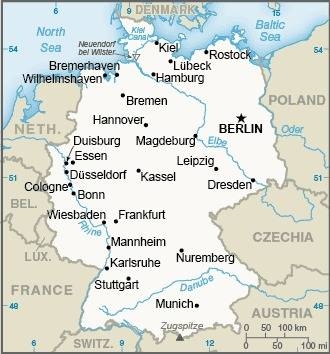
Locator map
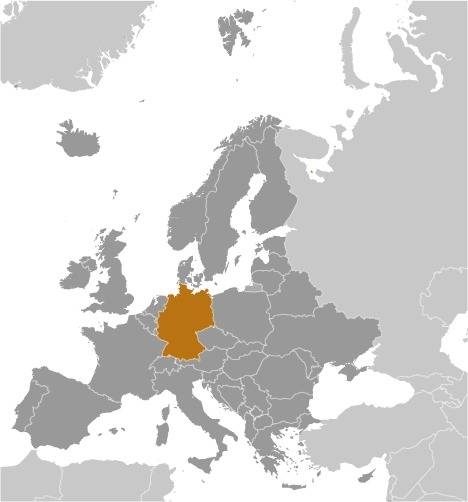
Flag
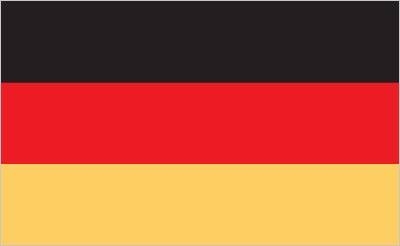
Capital: Berlin.
Independence / foundation: Germany obtained independence in 1871 with the establishment of the German Empire. The country was divided into four zones of occupation (UK, US, USSR, and France) in 1945 following World War II.
The Federal Republic of Germany (FRG or West Germany) proclaimed independence on May 1949 and included the former UK, US, and French zones. The German Democratic Republic (GDR or East Germany) proclaimed independence on October 1949 and was included in the former USSR zone. West Germany and East Germany unified on 1990. All four powers formally relinquished rights on 1991.
Population: 84 million.
Currency: Euro (EUR)
1 USD = 0.91 - 0.93
Time zone: UTC+1
Languages spoken: German (official). Note - Danish, Frisian, Sorbian, and Romani are official minority languages; Low German, Danish, North Frisian, Sater Frisian, Lower Sorbian, Upper Sorbian, and Romani are recognized as regional languages under the European Charter for Regional or Minority Languages.
Religions: Roman Catholic 27%, Protestant 24%, Muslim 3%, other 5%, none 41%.
Climate: Temperate and marine climate. Cool, cloudy and wet winters and summers. Occasional warm mountain (foehn) wind.
Real GDP (ppp – purchasing power parity): $4.5 trillion
Real GDP per capita (ppp): $54,000.
Main airports: Frankfurt Airport, Munich Airport, Düsseldorf Airport, Berlin Airport.
World heritage sites in Germany

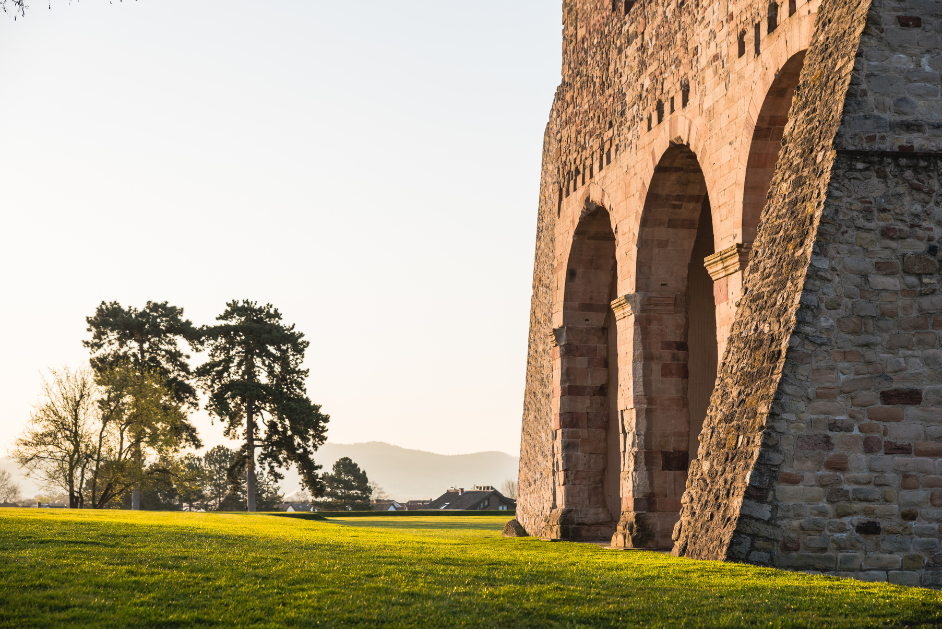
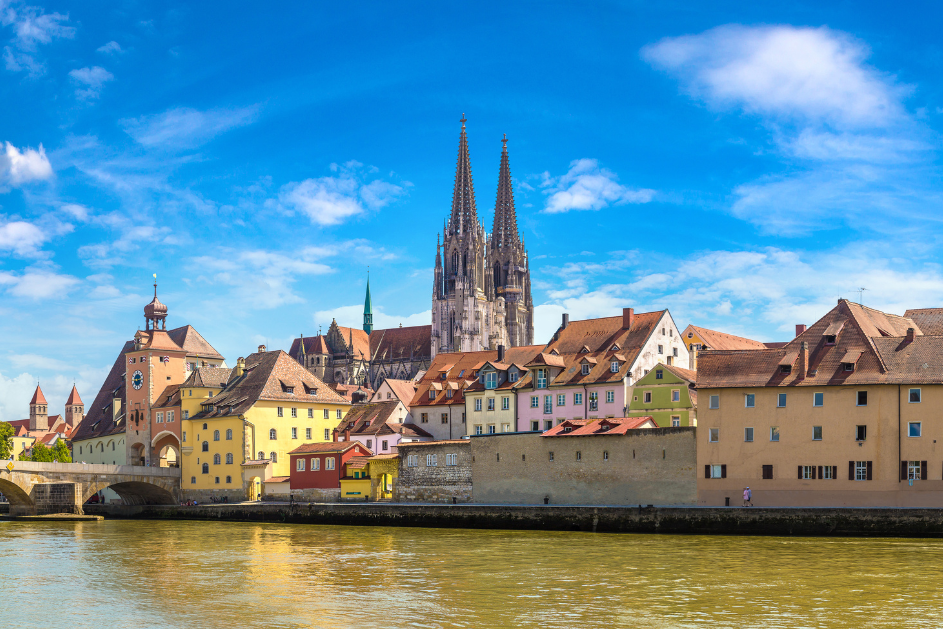
There are over 1,100 world heritage sites spread across more than 165 countries. New ones are added every year, and some may be removed from the list for various reasons.
Number of UNESCO listed sites: 52.
Top world heritage sites:
- Cologne Cathedral.- Abbey and Altenmünster of Lorsch.
- Old town of Regensburg with Stadtamhof.
- Speyer Cathedral.
- Würzburg Residence with the Court Gardens and Residence Square.
- Pilgrimage Church of Wies.
- Castles of Augustusburg and Falkenlust at Brühl.
- St Mary's Cathedral and St Michael's Church at Hildesheim.
- Roman Monuments, Cathedral of St Peter and Church of Our Lady in Trier.
- Frontiers of the Roman Empire.
- Hanseatic City of Lübeck.
- Palaces and Parks of Potsdam and Berlin.
- Abbey and Altenmünster of Lorsch.
- Mines of Rammelsberg, Historic Town of Goslar and Upper Harz Water Management System.
- Maulbronn Monastery Complex.
- Town of Bamberg.
- Collegiate Church, Castle and Old Town of Quedlinburg.
- Völklingen Ironworks.
- Messel Pit Fossil Site.
- Bauhaus and its Sites in Weimar, Dessau and Bernau.
- Luther Memorials in Eisleben and Wittenberg.
- Aachen Cathedral.
- Classical Weimar.
- Wartburg Castle.
- Museumsinsel (Museum Island), Berlin.
- Garden Kingdom of Dessau-Wörlitz.
- Monastic Island of Reichenau.
- Zollverein Coal Mine Industrial Complex in Essen.
- Historic Centres of Stralsund and Wismar.
- Upper Middle Rhine Valley.
- Town Hall and Roland on the Marketplace of Bremen.
- Muskauer Park / Park Mużakowski.
- Ancient and Primeval Beech Forests of the Carpathians and Other Regions of Europe.
- Berlin Modernism Housing Estates.
- Wadden Sea.
- Fagus Factory in Alfeld.
- Prehistoric Pile Dwellings around the Alps.
- Margravial Opera House Bayreuth.
- Bergpark Wilhelmshöhe.
- Carolingian Westwork and Civitas Corvey.
- Speicherstadt and Kontorhaus District with Chilehaus.
- The Architectural Work of Le Corbusier, an Outstanding Contribution to the Modern Movement.
- Caves and Ice Age Art in the Swabian Jura.
- Archaeological Border complex of Hedeby and the Danevirke.
- Naumburg Cathedral.
- Water Management System of Augsburg.
- Erzgebirge/Krušnohoří Mining Region.
- ShUM Sites of Speyer, Worms and Mainz.
- The Great Spa Towns of Europe.
- Frontiers of the Roman Empire – The Danube Limes.
- Mathildenhöhe Darmstadt.
- Frontiers of the Roman Empire – The Lower German Limes.
- Jewish-Medieval Heritage of Erfurt.
Interesting facts about Germany
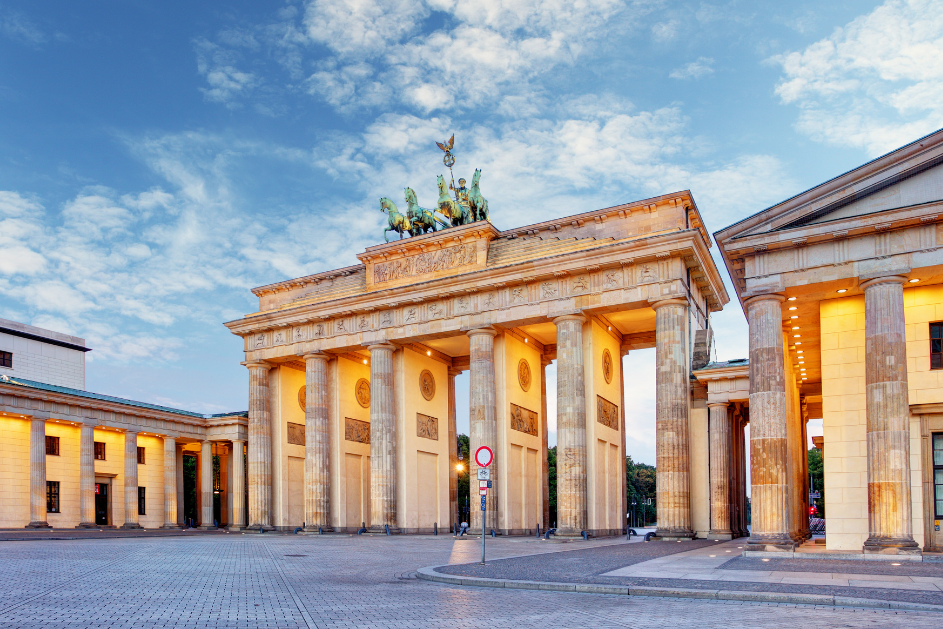
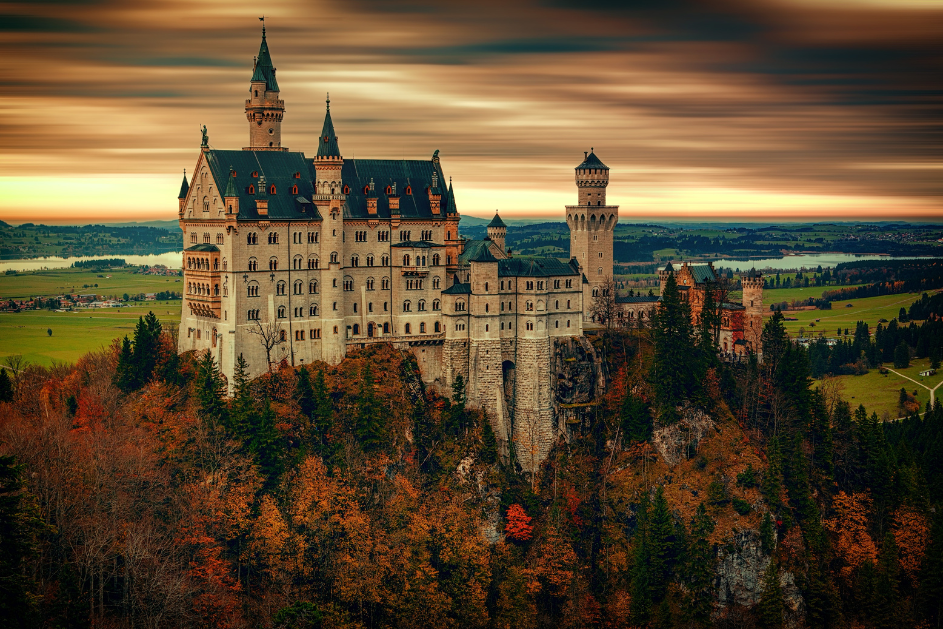
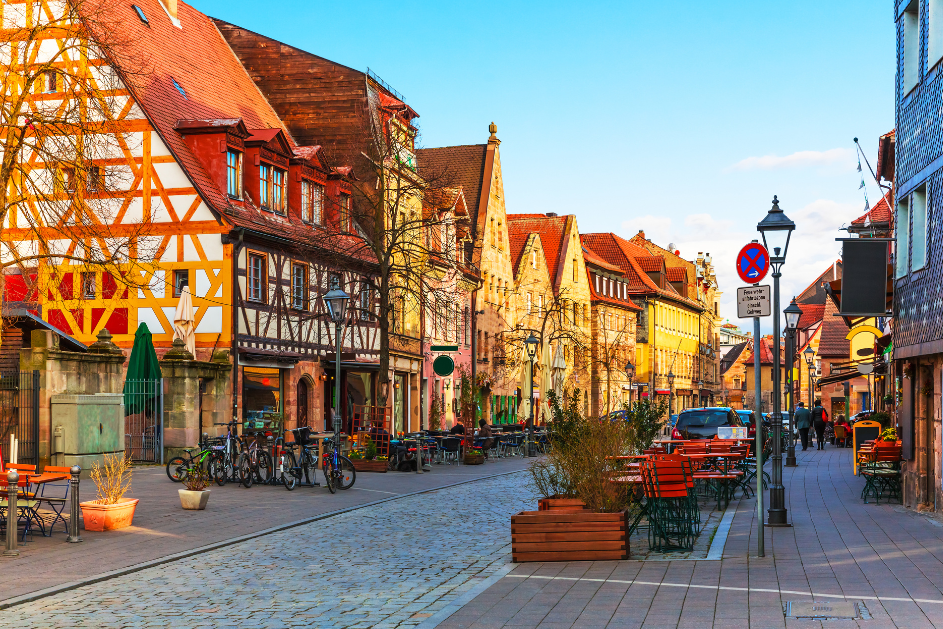
- Germany made the first magazine. The earliest magazine appears to have been the German Erbauliche Monaths-Unterredungen in 1663, started by Johann Rist, a theologian and poet of Hamburg.
- Despite being the industrial power of Europe, one third of Germany is still covered in forests.
Further reading: N/A.
Germany Travel tips
Socket type: C / F. Guide to socket types.
Weekend days: Saturday and Sunday.
Driving: Cars drive on the Right.
Local taxi apps: Uber, Taxi.eu.
Travel Guides: Lonely Planet.
Languages spoken: German (official). Note - Danish, Frisian, Sorbian, and Romani are official minority languages; Low German, Danish, North Frisian, Sater Frisian, Lower Sorbian, Upper Sorbian, and Romani are recognized as regional languages under the European Charter for Regional or Minority Languages.
Basic words and phrases in the main language:
Hello: HalloPlease: Bitte
Thank you: Danke
Help: Kannst du mir helfen?
Learn more with our favorite learning app Mondly.
Find a hotel in Germany
Booking.comBook tours and activities:
More about Germany on Solo Female Travelers
Coming soon.Did you spot any errors? We do our best to keep this information updated and accurate, but things change. If you saw anything that is not right, let us know so we can fix it: [email protected].
About the Solo Female Travel Safety Index
Safety matters to solo female travelers, you told us so in our annual Solo Female Travel Survey, where year after year, women prove that this is their most important concern when traveling solo.
We wanted to do something about it, so we built these country-specific pages where you can find reviews and scores for 7 key variables affecting the safety of women traveling solo.
Variables
- Risk of scam
- Risk of theft
- Risk of harassment
- Attitudes towards women
- UK Travel Advisory
- US Travel advisory
- Global Peace Index (GPI)
Informing OSAC
The Solo Female Travel Safety Score is used by the Overseas Security Advisory Council for including safety concerns for women travelers in their country security reports; OSAC is a partnership between the U.S. Department of State and private-sector security community.
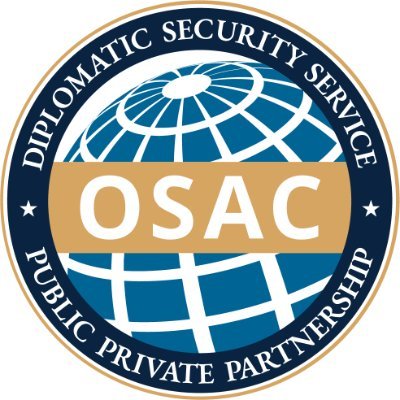
How to use the Safety Index
On this page, you will find the country score and the personal opinions on safety of other women traveling solo.
You can sort the comments by:
- The level of experience traveling solo of the reviewer (beginner = <5 trips solo, Intermediate = 5 to 10 trips solo, Experienced = >10 trips solo).
- The age of the traveler.
- Whether they are a visitor or local.
- The date they were posted.
The safety scores range from 1 to 4 with 1 being the safest and 4 being the most dangerous for solo female travelers.
Thus, the lower the score, the safer the country.
Looking for more safety resources?
This entire website is devoted to helping women travel solo. Check out the links below to learn more:
Solo Female Travel Stats: Results from the the largest, most comprehensive and only global research study on solo female travel trends, preferences and behaviors published.
Thanks to Jacobo Vilella for creating the Solo Female Travelers Safety Index ❤️






